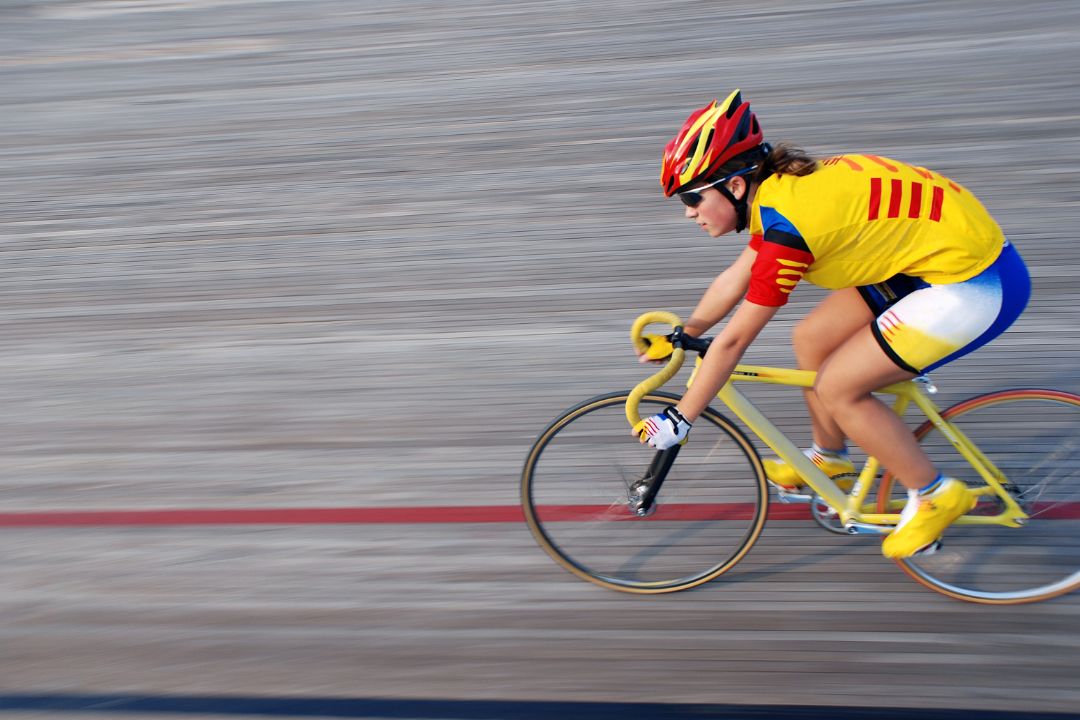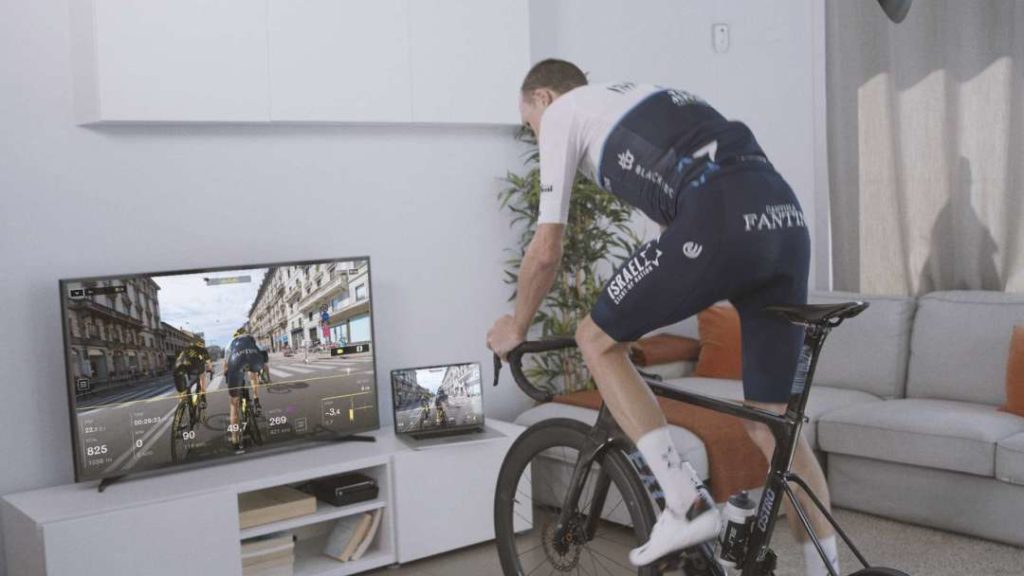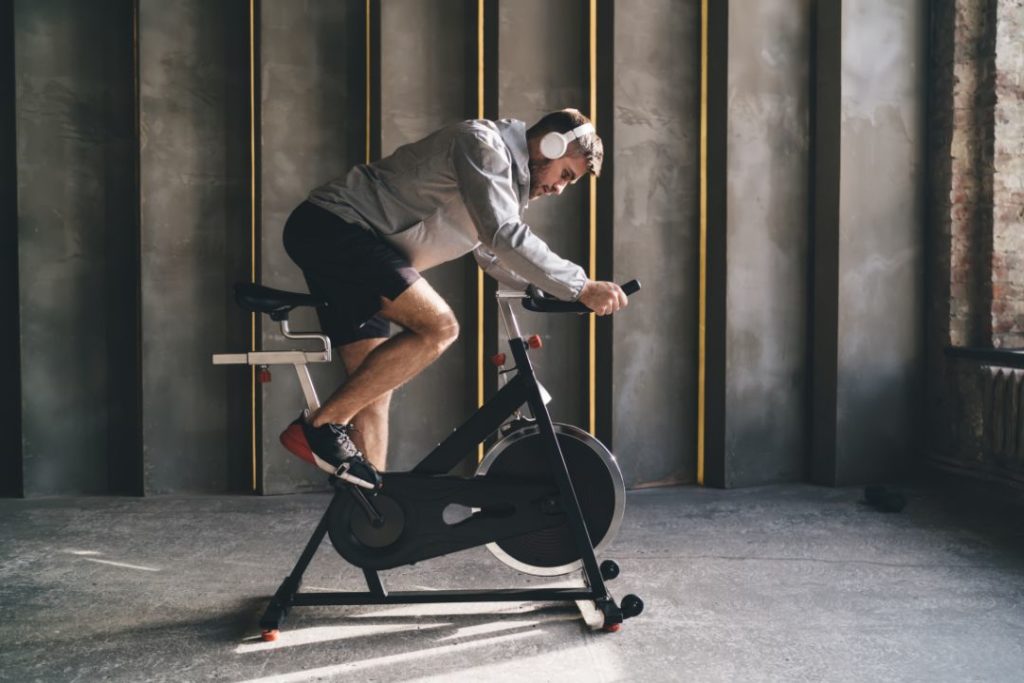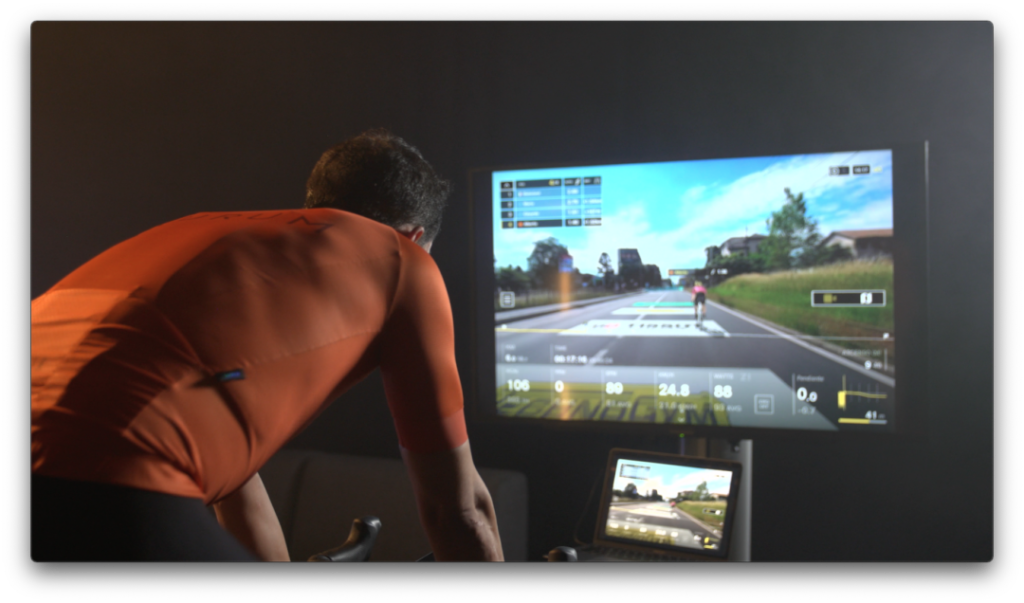Track cycling is one of the most demanding disciplines in the cycling world, where speed, strategy, and endurance combine to push cyclists to the limit of their abilities. The constant pursuit of performance improvement has led many cyclists to incorporate advanced technologies into their training, with the cycling simulator being one of the most effective and popular tools. But how can this technology be used to replicate track conditions and enhance performance? This article is designed to guide you through this process, offering practical tips and techniques you can apply from the comfort of your home.
The importance of track cycling
Track cycling differs from other modalities in its focus on pure speed, precision, and tactics. Every second counts, and every move must be calculated with precision. The track, often with banked curves and a controlled environment, requires cyclists to develop specific skills that cannot always be practised on roads or uneven terrain.
The importance of this discipline lies in its ability to enhance anaerobic power, reaction speed, and the ability to maintain high speeds over prolonged periods. Additionally, track cycling is an excellent way to improve pedalling technique, as any loss of efficiency is magnified in the track environment. Therefore, training specifically for track cycling is crucial for those who wish to compete at the highest level.
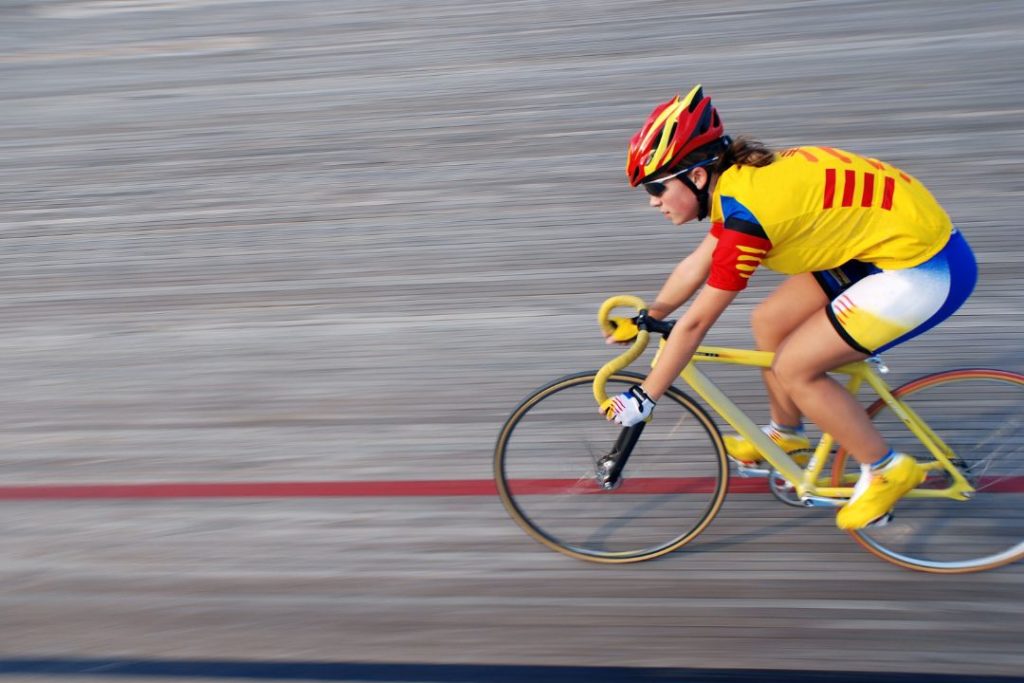
Benefits of training on a simulator
The cycling simulator has become an indispensable tool for cyclists looking to take their performance to the next level. These devices allow you to replicate track conditions very precisely, offering several key benefits.
One of the main benefits is the ability to train in a controlled environment. With a simulator, you can adjust resistance, incline, and other parameters to precisely mimic the conditions of a specific cycling track. This means you can train for specific competitions without having to travel to the track, saving time and resources.
Moreover, the simulator allows for constant performance monitoring. Most cycling simulators are equipped with sensors that measure power, cadence, speed, and heart rate in real-time. This information is invaluable for adjusting your training and ensuring that you are progressing effectively.
Another benefit is the ability to simulate race situations. You can program the simulator to replicate the exact conditions of a track race, including the changes in resistance you would face during a competition. This allows you to develop race strategies and mentally prepare for the challenges you will encounter.
Choosing the right equipment
To get the most out of a cycling simulator, it is essential to choose the right equipment. Not all simulators are the same, and selecting one that meets your specific needs is crucial to improving your track cycling performance.
The first aspect to consider is the compatibility of the simulator with your track bike. Some simulators require special adapters or may not be compatible with track bikes due to differences in frame design and rear wheel positioning. Ensure that the simulator you choose works well with your existing equipment.
It is also important to consider the accuracy of the simulator in measuring power. The most advanced simulators can measure power with 1% accuracy, which is crucial for track cyclists who rely on precise data to adjust their training. Additionally, ensure that the simulator can replicate the resistance you would experience on a real track, including the ability to simulate high speeds and rapid accelerations.
Another key aspect is the connectivity of the simulator. Many modern cycling simulators can connect to training apps and simulation software, allowing you to access a variety of routes and pre-programmed workouts. This not only makes training more varied and exciting but also allows you to compare your performance with that of other cyclists in real-time.
Adjusting the simulator to simulate track cycling
Once you have selected the right simulator, the next step is to adjust it to accurately simulate track cycling conditions. This process requires attention to detail and a clear understanding of the specific characteristics of the track.
The first adjustment you should make is resistance. In track cycling, the resistance you experience is much higher than in other disciplines due to the high speeds and the lack of natural wind. Ensure that your simulator is set to replicate this additional resistance.
Another important adjustment is cadence. Cadence in track cycling is usually higher than in road cycling, as cyclists aim to maintain a constant speed without sudden changes in resistance. Set your simulator to train at higher cadences, which will help you improve your pedalling efficiency and your ability to sustain high speeds over extended periods.
Finally, it is important to adjust the position of your bike on the simulator. The position on a track bike is more aerodynamic and aggressive than in other disciplines, aiming to reduce air resistance and maximise power transfer. Ensure that your bike’s position on the simulator reflects this setup so that your training is as realistic as possible.
Techniques to improve endurance
Endurance is a crucial component of track cycling, and training it effectively on your simulator can make a significant difference in your performance. Here are some key techniques to improve your endurance using a cycling simulator.
Firstly, high-intensity interval training (HIIT) is extremely effective for improving endurance in track cycling. These workouts involve alternating between periods of maximum effort and periods of active recovery.
Another useful technique is sustained endurance training. This involves maintaining a constant speed or power over a prolonged period, simulating the long straights of the track. This type of training is excellent for improving aerobic capacity and the ability to maintain a high pace during the race.
In addition, it is important to incorporate race simulation sessions. Use the simulator to recreate the conditions of a track race, including changes in speed and resistance. This not only improves your physical endurance but also mentally prepares you for the intensity of the competition.
Speed and power training
Speed and power are two of the most important aspects of track cycling, and the cycling simulator is an ideal tool for developing them.
To improve speed, it is essential to work on cadence and pedalling technique. Use the simulator to perform high-cadence workouts, focusing on maintaining smooth and efficient pedalling. This will not only increase your speed on the track but also reduce the risk of muscle fatigue.
Power training, on the other hand, focuses on the ability to generate the maximum amount of force in the shortest possible time. On the simulator, you can perform short, explosive sprint workouts, concentrating on generating maximum power with each pedal stroke.
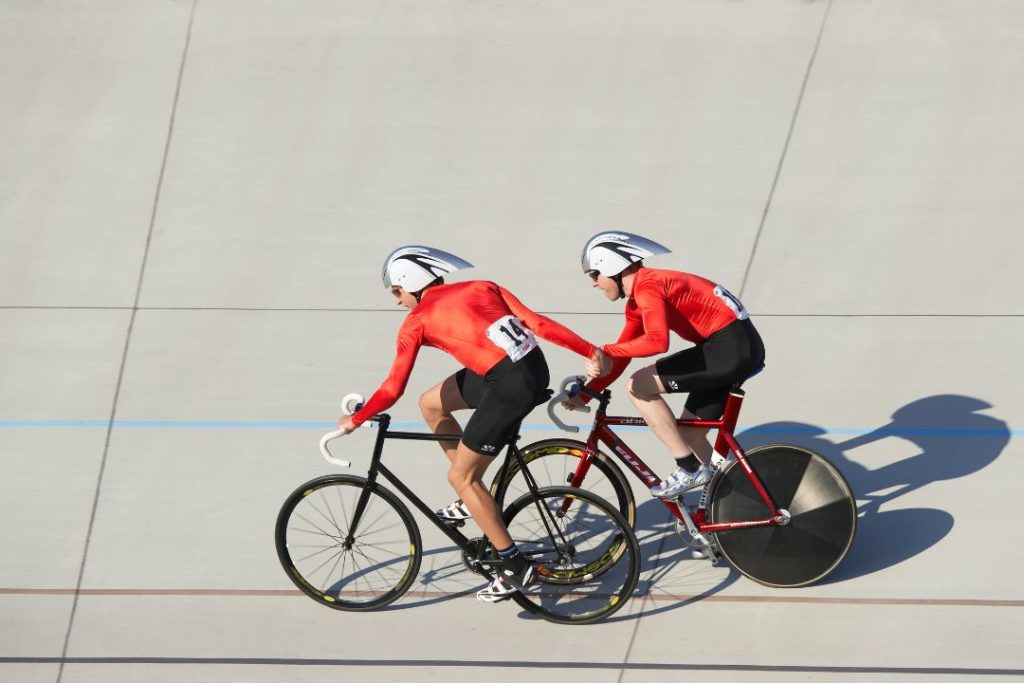
Simulating race strategies
Track cycling is not just about strength and speed; strategy plays a fundamental role in success on the track. Fortunately, a cycling simulator allows you to practise and refine your race strategies in a controlled environment.
Firstly, use the simulator to practise track positioning. Positioning in the group and managing energy during the race are essential for maximising your chances of victory.
Another important strategy is pace management. In a track race, knowing when to accelerate and when to conserve energy is crucial.
Finally, practise sprinting and attack techniques. These manoeuvres are essential to secure a victory on the track.
Monitoring and analysing performance
One of the greatest benefits of training with a cycling simulator is the ability to monitor and analyse your performance in real-time. This information is invaluable for making adjustments to your training and ensuring that you are on the right path to achieving your goals.
Firstly, it is important to monitor power. Power is a direct measure of your performance on the bike, and the simulator allows you to see how it varies during different types of workouts.
Additionally, analysing cadence and speed is crucial for understanding how you are progressing. If your cadence and speed are improving over time, it is a sign that your training is yielding results.
Common mistakes when training on a simulator
Despite its many benefits, it is easy to make mistakes when training with a cycling simulator. Here are some of the most common mistakes and how to avoid them to maximise the results of your training.
One of the most common mistakes is not adjusting the simulator to accurately reflect track conditions.
Another mistake is focusing solely on power and neglecting other aspects of training, such as pedalling technique or cadence.
Finally, not regularly monitoring or analysing your performance can lead to stagnation. It is crucial to review the data from each training session to identify areas for improvement and make the necessary adjustments.
Additional tips to optimise training
To optimise your training on a cycling simulator, here are some additional tips to help you get the most out of every session.
Firstly, vary your workouts. While it is important to follow a structure, it is also crucial to incorporate different types of training to work on all areas of your performance.
It is also advisable to perform cross-training outside the simulator. While the simulator is a powerful tool, complementing your training with strength, flexibility, and general conditioning exercises will help improve your track performance.
Finally, pay attention to recovery. Track cycling is a demanding discipline, and rest is essential to allow your body to recover and strengthen.
The simulator is a great ally for your training if your discipline is track cycling. BKOOL is a reliable tool to help you progress.
BKOOL is the most complete cycling simulator on the market, try it FREE for 7 days!
 Go to BKOOL
Go to BKOOL
